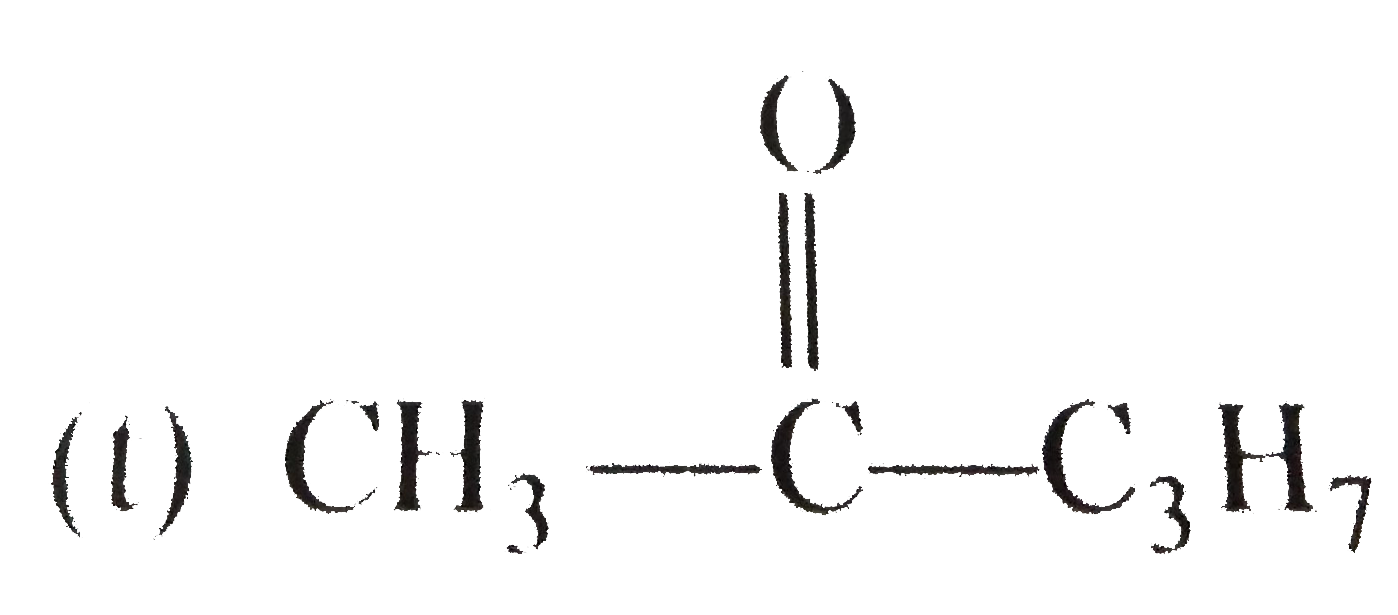Compounds showing Cannizaro' s reaction are
A) CH3CH2CHO ( B) CHCl2CHO
C) (CH3)3C−CHO D) C6H6CHO
A,B,C
C,D
A.C,D
A,B,C,D
The correct Answer is:2
Step by step video, text & image solution for Compounds showing Cannizaro' s reaction are A) CH_(3)CH_(2)CHO ( B) CHCl_(2)CHO C) (CH_(3))_(3) C- CHO D) C_(6)H_(6)CHO by Chemistry experts to help you in doubts & scoring excellent marks in Class 11 exams.
Updated on:21/07/2023Topper's Solved these Questions
- CARBONYL COMPOUNDSBook:NARAYNAChapter:CARBONYL COMPOUNDSExercise:LEVEL -III
Explore 54 Videos
- CARBONYL COMPOUNDSBook:NARAYNAChapter:CARBONYL COMPOUNDSExercise:STATEMENT TYPE
Explore 24 Videos
- CARBONYL COMPOUNDSBook:NARAYNAChapter:CARBONYL COMPOUNDSExercise:LEVEL -1 (C.W)
Explore 20 Videos
- BENZENEBook:NARAYNAChapter:BENZENEExercise:Level-6
Explore 121 Videos
- CHEMICAL BONDING AND MOLECULAR STRUCTUREBook:NARAYNAChapter:CHEMICAL BONDING AND MOLECULAR STRUCTUREExercise:EXERCISE -4
Explore 54 Videos
Similar Questions
a. Acid halides, anhydrides, esters and amides, all of them contain (C=O) group but none of them gives test for (C=O) group, i.e., they do not form oximes, hydrazones, and DNP derivatives, etc. Why?
b. Arrange the following in the decreasing order of nucleophilic addition.
i. (1)−CHO
(2)−COCH3
(3)−COOH
(4)−COCI
(5)−CONH2
(6)−COOCH3
(7)−COOΘ
ii. (1)CH3CHO
(2)CH3COCH3
(3)HCHO
(4)CH2H5CH2COCH3
iii. (1)CH3COCH3
(2)C6H5COCH3
(3)C6H5COC6H5
(4)C6H5CH2COCH3
iv. (1)C6H5CHO
(2)ρ−CH3.C6H4.CHO
(3)ρ−OH.C6H4.CHO
(4)ρ−NO2.C6H4.CHO
(5)ρ−CI.C6H4.CHO
v. (1)HCHO
(2)CH3CHO
(3)CH3COCH3
(4)CI3CCHO
c. Arrange the following in the increasing order of ease of hydrolysis.
(1)CCH3COOC2H5
(2)CH3COCI
(3)(CH3CO)2O
(4)CH3CONH2
d. Arrange the following in the increasing order of ease of acid-catalysed esterification of:
i.
ii. (1)CH3CH2COOH
(2)(CH3)2CHCOOH
(3)(CH3)3CCOOH
iii. (1)CH3CH2CH2OH
(2)CH3CHOHC2H5
(3)(CH3)2C(OH)C2H5
e. Arrange the following esters in decresing order of ease of alkaline hydrolysis.
i. (1)HCOOCH3
(2)CH3COOCH3
(3)(CH3)3CCOOCH3
(4)(CH3)2CHCOOCH3
ii. (1)CH3COOCH3
(2)CH3COOC(CH3)3
(3)CH3COOCH(CH3)2
(4)CH3COOCH2CH3
iii. (1)C6H5COOCH3
(2)ρ−CH3O−C6H4−CCOOCH3
(3)ρ−NO2−C6H4−COOCH3
(4)ρ−Cl−C6H4−COOCH3
View SolutionYou are provided with following four reagents: I2/NaOH,NaHSO3,LiAH4 Schiff's reagent. Write which two reagent. Write which two reagents can be used to distinguish between the compounds in each of the following pairs :
(i) CH3CHO and CH3COCH3 , (ii) CH3CHO and C6H5CHO
(iii) C6H5COCH3 and C6H5COC6H5
View Solution
Knowledge Check
Which of the following undergoes cannizaro reaction ?
A)HCHO B) C6H5CHO
C) Cl3C−CHO D) (CH3)3C−CHOAOnly A & BBOnly B & CCOnly C & DDOnly A,B & DArrange the following compounds in decreasing orders of rate of hydration.
(X)CCl3CHO (Y)CH3CHO (Z)CH3COCH3 (W)CF3CHOAW gt Z gt X gt YBW gt X gt Y gt ZCW gt Y gt Z gt XDW gt Z gt Y gt XC6H5−CH=CH−CHO is
ABenzaldehydeBSalicylaldehydeCCinamaldehydeDNone of these.
Deduce the structures of the compounds which yeild the following products on reductive ozonolysis.
a) CH3CHO and HCHO
b) (CH3)2CO and HCHO
c) (CH3)2CO and CH3CHO
d) (CH3)2CO only
e) CH3CH2−C∣CH3=O (two moles)
f) HCHO and O=CH−CH∣CH3(CH3)2
g) CH3CH2C∣C2H5=O and OHC−CHO and OHC(CH2)CH3
h) OHC−CH2CH2CH2CHO only
i) OHC−CH2−CHO (two moles)
j)

View SolutionObserve the following compounds
(A) CH3CH2CHO
(B) CH3COCH3
(C) Ph−CHO
(D)CH3CH(CH3)CHO
(E) HCHO
View Solution(a) You are provided with the following four reagents LiAlH4,I2/NaOH,NaHSO3 and Schiff's reagent. Which two reagents can be sued to distinguish between the compound in each of the following pairs:
(i) CH3CHO and CH3COCH3
(ii) CH3CHO and C6CH5CHO
(iii) C6H5COCH3 and C6H5COC6H5
(b) Write a note on Cannizzaro reaction
View SolutionCH3CH2CH(CHO)CH2CH3andCH3CH(CHO)CH2CH2CH3 are :-
View SolutionTautomerism is possible in
(1) CH3−CHO (3)H−CHO
(2) CH3−CO−CH3 (4)(CH3)3C−CHO
View Solution

